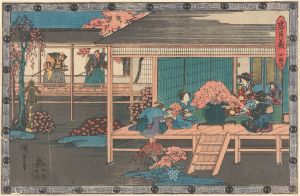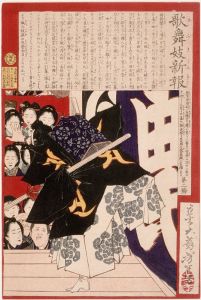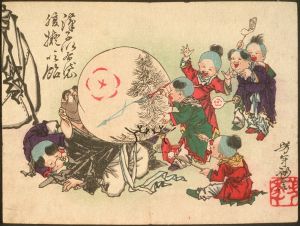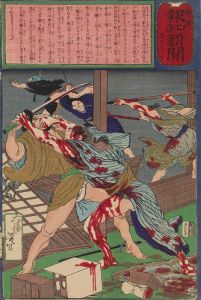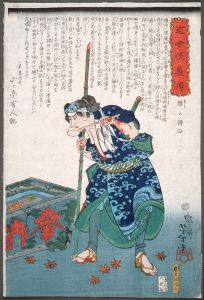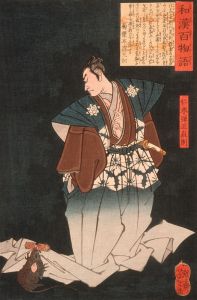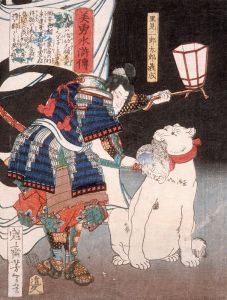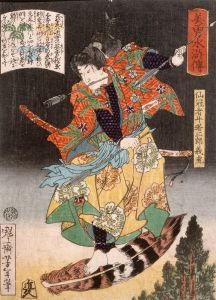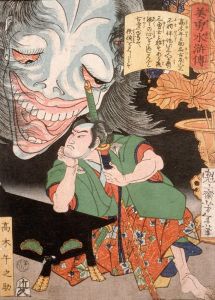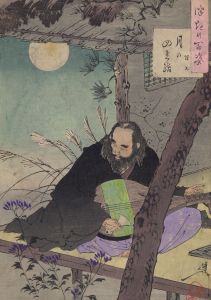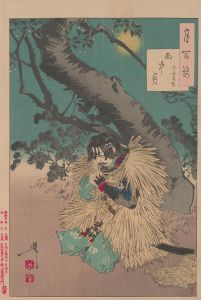
Botandōrō
A hand-painted replica of Tsukioka Yoshitoshi’s masterpiece Botandōrō, meticulously crafted by professional artists to capture the true essence of the original. Each piece is created with museum-quality canvas and rare mineral pigments, carefully painted by experienced artists with delicate brushstrokes and rich, layered colors to perfectly recreate the texture of the original artwork. Unlike machine-printed reproductions, this hand-painted version brings the painting to life, infused with the artist’s emotions and skill in every stroke. Whether for personal collection or home decoration, it instantly elevates the artistic atmosphere of any space.
"Botandōrō" is a woodblock print by the renowned Japanese artist Tsukioka Yoshitoshi, created in 1885. Yoshitoshi, a master of the ukiyo-e genre, is celebrated for his innovative and often dramatic compositions that capture the essence of Japanese folklore, history, and the supernatural. This particular print is part of his series "New Forms of Thirty-Six Ghosts" (Shinkei Sanjūrokkaisen), which showcases various ghost stories and supernatural events from Japanese culture.
The title "Botandōrō" translates to "The Peony Lantern," referring to a famous Japanese ghost story that has been adapted into various forms of art, literature, and theater over the centuries. The story of "Botandōrō" originates from a Chinese tale that was later adapted into Japanese folklore. It tells the tragic and eerie tale of a young man who falls in love with a beautiful woman, only to discover that she is a ghost who visits him nightly, carrying a peony lantern.
In Yoshitoshi's depiction, the scene is imbued with a haunting atmosphere, characteristic of his work. The print captures the moment when the ghostly woman, Otsuyu, and her spectral maid approach the young man, Hagiwara Shinzaburō, under the cover of night. Yoshitoshi's use of delicate lines and subtle color gradations enhances the ethereal quality of the figures, making them appear otherworldly and translucent. The peony lantern, a central motif in the story, glows softly, casting an eerie light that heightens the sense of supernatural presence.
Yoshitoshi's "Botandōrō" is notable for its intricate details and the emotional depth conveyed through the characters' expressions and body language. The artist's skillful use of light and shadow creates a sense of depth and movement, drawing the viewer into the haunting narrative. The print exemplifies Yoshitoshi's ability to blend traditional ukiyo-e techniques with his unique artistic vision, resulting in a work that is both visually striking and emotionally evocative.
Tsukioka Yoshitoshi (1839-1892) is often regarded as the last great master of the ukiyo-e genre. His career spanned a period of significant social and political change in Japan, transitioning from the Edo period to the Meiji era. Despite facing personal struggles and the decline of ukiyo-e's popularity due to the advent of modern printing techniques, Yoshitoshi continued to innovate and produce works that left a lasting impact on Japanese art.
"Botandōrō" and the "New Forms of Thirty-Six Ghosts" series reflect Yoshitoshi's fascination with the supernatural and his dedication to preserving traditional Japanese stories through his art. These works not only serve as a testament to his artistic prowess but also as a cultural bridge, connecting contemporary audiences with the rich tapestry of Japanese folklore and mythology.
In summary, Tsukioka Yoshitoshi's "Botandōrō" is a masterful woodblock print that captures the eerie beauty of a classic Japanese ghost story. Through his exceptional technique and imaginative composition, Yoshitoshi brings to life the haunting tale of love and loss, leaving a lasting impression on all who view his work.





